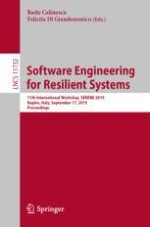2019 | OriginalPaper | Chapter
Reactive Middleware for Effective Requirement Change Management of Cloud-Based Global Software Development
Author : David Ebo Adjepon-Yamoah
Published in: Software Engineering for Resilient Systems
Publisher: Springer International Publishing
Activate our intelligent search to find suitable subject content or patents.
Select sections of text to find matching patents with Artificial Intelligence. powered by
Select sections of text to find additional relevant content using AI-assisted search. powered by
